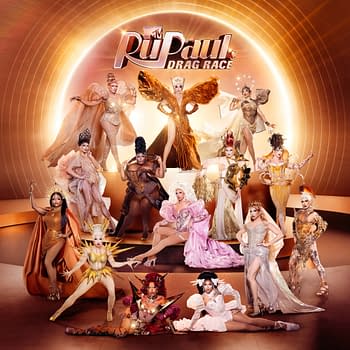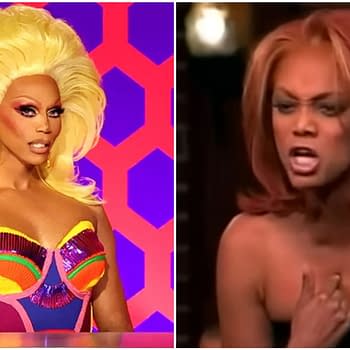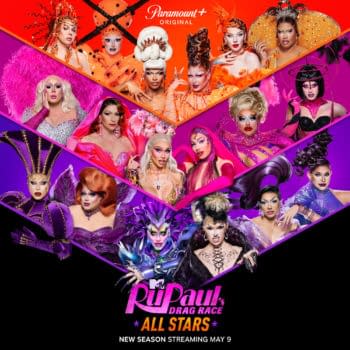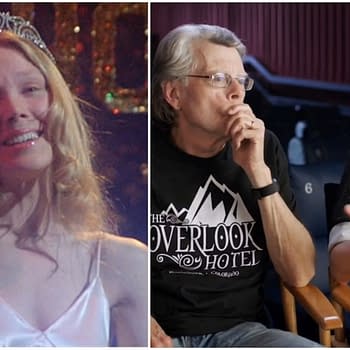Posted in: CW, MTV, Paramount+, TV | Tagged: America's Next Top Model, drag race
America's Next Top Model Walked So Drag Race Could Stomp the Runway
America's Next Top Model was instrumental in the genre of reality TV competition shows, with RuPaul's Drag Race the successor to that title.
Article Summary
- America's Next Top Model set the stage for RuPaul's Drag Race and modern reality TV competitions.
- Both shows had controversial rules but evolved to embrace inclusivity and changing social norms.
- Drag Race borrowed Top Model's photo challenges but shifted to comedy, camp, and self-expression.
- RuPaul's Drag Race now leads as an inclusive drag showcase, while Top Model ended in 2018.
Picture it: May 2003, Sean Paul was gettin' busy on the top of the charts, low-rise jeans were creeping lower by the second, and Tyra Banks decided this was her time to play a little game and torture a pack of young women in hopes of creating a killer reality TV show. No, it's not a horror flick; this is the origin of America's Next Top Model, the franchise that launched global spin-offs, as well as shaped popular culture and reality TV as we know it today.
One of the unforeseen results of America's Next Top Model is its spiritual successor, RuPaul's Drag Race, which can best be described (at least the early seasons) as Top Model but for drag queens and funny with a big side of stupid humor and camp. The later seasons of Top Model actually did incorporate both Drag Race queens in a challenge as well as challenges that get the girls to loosen up and show their funnier side, even if that's not always "pretty".
Top Model, both at the time and in retrospect, has had some problematic elements to its foundation (to say nothing of some challenges), most notably the competition seemingly being structured around how much verbal abuse 18-24-year-old women can take before they break down, then use that to garner television ratings.

That said, RuPaul's Drag Race is far from un-problematic, especially early on. For a show about "gender f*ckery," it's surprisingly gendered, and not really in a good way. Growth and change are instrumental, especially as we learn and listen to others' experiences, and though it has been slow to learn, the show has gotten there eventually. The ban on transgender queens competing was lifted, and the slurs and genital-themed challenges were removed from the show format, cementing its status as a cultural touchstone to the LGBTQ community in mainstream culture.
The main challenges on Top Model are all about taking gorgeous fashion photos, and that's what they're judged on – early seasons of RuPaul's Drag Race straight up took this format, most notably in the first mini-challenge of each season. Early on, the judges pick the sexiest photos, seeming to judge by Top Model standards. In contrast, in later seasons, the emphasis has been on comedy and absurdity instead of being a competition about which man can look the most like a sexy female fashion model.
Case in point: Raja. She was a makeup artist on Top Model for several seasons before competing on Drag Race, and knowing the expectations, pitfalls, and format did benefit her in season 3: she won the very first photo challenge, which brings up another interesting point: the judging. The judges' expectations and judging metrics for early seasons of Drag Race did hold "fish," aka realistic female impersonation and dramatic transformations with a side of sexiness, in high regard. A lot of the rules that were in place for earlier seasons were done away with as Drag Race evolved to keep up with the times. The most prominent examples here are surrounding trans queens; the show used to ban "any individual who has started taking female hormones or had surgery to feminize their body," as this was seen as cheating, akin to an MLB player taking steroids. As a note, many trans queens have competed with several coming out on the show, but had to confirm they were not on hormones or had "begun physically transitioning" at the time of filming.
Top Model has had its fair share of adapting to be better as well: the notable rule abolishment here is the height and size requirement. Early seasons of Top Model always made measurements a big thing, having all the women in a giant group getting measured and weighed and subsequently shamed if they were deemed "too big." Now, for reference, the height requirement was 5'8", and these girls who are 5'8" and taller are weighing in under 120 pounds. For those who might not be aware, a girl who's close to 6 feet tall is far from fat at 130 pounds. In the fashion industry, Size 6 and above is considered plus size (despite this being average to thin in reality), but as the years went on and the body revolution started, the emphasis on size and weight started to creep more towards "healthy looking" despite Top Model still being behind the curve when magazines were doing away with retouching bodies and including "real bodies" were consistently represented in campaigns and runways.
Living art evolves and adapts to society around it, and RuPaul's Drag Race is a prime example of this, as is America's Next Top Model, to an extent. Luckily, both Drag Race and Top Model evolved and grew: plus size model Whitney Thompson won America's Next Top Model cycle 10 and RuPaul's Drag Race season 9 featured the first "out and transitioned" queen, Peppermint, and even the first transgender man in season 13, Gottmik, with Kylie Sonique Love being the first trans winner in All Stars 6.
Past aside, the current iteration of Drag Race is more inclusive, albeit it has retreated back into the "over-produced and shady edit" of earlier reality TV shows. However, it's proven time and time again that not only is drag about being resourceful, but it's also about listening, standing up for your community, and being the change you wish to see in the world. That's fundamentally where America's Next Top Model fails in that it's generally been more about reality TV drama and leaning into fabricated drama and egos.
In its last few seasons, America's Next Top Model sort of lost the plot a bit, and it felt like the show lost its footing and didn't really know where to go, especially after Tyra took a break from hosting. Ultimately, it felt like the show didn't really know what to do without screaming at contestants and forcing them into uncomfortable situations all under the guise of preparing them for the realities of becoming a supermodel. The show ended its run with cycle 24, which aired in 2018, and despite Tyra insisting Top Model would film a cycle 25, nothing ever came of it.
RIP (or not) America's Next Top Model, a product of its time, 2003 – 2018. But long live RuPaul's Drag Race (and its million spin-off shows), currently airing on MTV and streaming on WOW Presents+.















